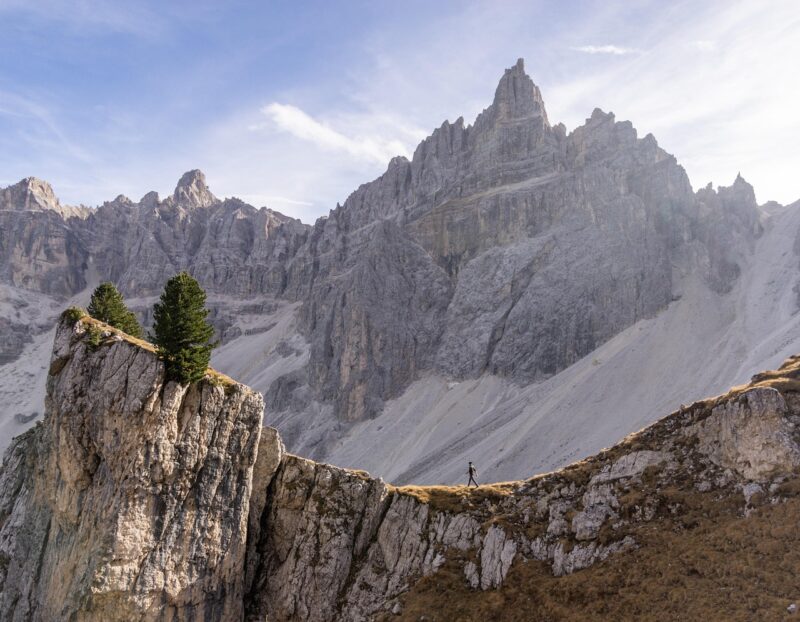
In recent years, the travel landscape has undergone a significant transformation, with solo travelers increasingly turning towards slow tourism as a way to explore hidden gems off the beaten track. Slow tourism emphasizes a more immersive, quality-driven approach to travel, encouraging visitors to savor experiences and connect deeply with local cultures.
1. The Rise of Solo Travel
Global travel has seen a consistent uptick in solo travelers, driven by a desire for freedom and individualized experiences. According to recent studies, the number of individuals traveling alone has increased drastically over the last decade. Travelers are seeking to escape the constraints of large group tours, opting instead for journeys that cater to their personal interests and lifestyles.
Solo travel allows individuals to explore destinations at their own pace, making it a perfect match for the principles of slow tourism. This approach advocates for prolonged stays and immersive experiences that foster a meaningful connection with each destination.
2. What is Slow Tourism?
Slow tourism is defined by its focus on sustainability, local experiences, and a slower pace of life. It encourages tourists to take a step back from fast-paced tourism, which often promotes ticking destinations off a bucket list. Instead, travelers are encouraged to:
– **Engage Deeper:** Slow tourism invites travelers to fully engage with a community by participating in cultural experiences, such as cooking classes, workshops, or artisan tours.
– **Travel Responsibly:** Slow tourists are more likely to support local businesses and engage in eco-friendly practices, contributing to the preservation of environments and cultures.
– **Savor Time:** This philosophy prioritizes spending time in fewer locations, allowing for genuine interactions and a deeper understanding of local traditions and customs.
This trend has naturally resonated with solo travelers, who, by traveling alone, often seek to discover not just another destination, but a profound connection with the people and places around them.
3. Discovering Hidden Gems:
Solo travelers embracing slow tourism prioritize the discovery of hidden gems—those authentic local experiences that tourists often miss. Here are some of the ways they do so:
– **Small Towns and Villages:** Instead of heading straight to iconic cities, solo travelers are increasingly opting for quaint towns and villages where they can enjoy a quieter environment, interact with locals, and experience genuine culture.
– **Local Accommodations:** Choosing to stay in locally-owned guesthouses or Airbnb properties allows solo travelers to experience neighborhoods authentically. These accommodations often provide insider knowledge about local food, traditions, and attractions that a standard hotel might not.
– **Unique Experiences:** From taking part in traditional festivals to exploring uncommercialized hiking trails, solo travelers are looking for experiences that reflect the spirit of the region rather than the predicable tourist highlights.
This approach to travel makes exploring lesser-known areas and participating in local events a way for solo travelers to feel more connected and engaged.
4. Tips for Solo Travelers Embracing Slow Tourism
If you’re a solo traveler looking to engage in slow tourism, here are some valuable tips:
– **Plan Your Itinerary Wisely:** Instead of cramming numerous sites into your schedule, choose one or two locations for an extended stay. This allows for exploration at a relaxed pace and provides ample opportunities for spontaneous adventures.
– **Connect Locally:** Use social media platforms and travel forums to connect with locals before your trip. Consider joining local events or meet-ups that allow you to immerse yourself in the culture and connect with fellow travelers.
– **Be Flexible:** Embrace the unpredictability of travel. Slow tourism is about enjoying the journey and being open to new experiences that come your way. If you stumble upon a local market or festival, consider changing your plans to join in on the fun.
– **Document Your Journey:** Slow travel is all about observing and experiencing. Keep a journal or a personal blog where you can reflect on your experiences, thoughts, and feelings. This process will enhance your connection to the trip and help you appreciate the little things that make each destination unique.
5. Challenges and Considerations
While slow tourism brings many rewards, solo travelers may face certain challenges. Here are some elements to consider:
– **Safety:** Traveling alone requires heightened awareness of personal safety. Research your destination, avoid overly isolated areas at night, and trust your intuition in unfamiliar situations.
– **Loneliness:** Solo travel can sometimes lead to feelings of isolation. Make an effort to engage with fellow travelers or locals through activities, meals shared, or community events, thus maximizing opportunities to meet new people.
– **Cultural Sensitivity:** When immersing oneself in a new community, approach cultural experiences with respect and humility. Familiarize yourself with local customs and etiquettes to avoid unintentional offense.
Acknowledging these challenges ensures that your travel experience remains positive and enriching, as you navigate your solo journey intentionally and thoughtfully.
6. Conclusion
In an age of rapid travel, solo travelers embracing slow tourism discover a beautiful balance between adventure and mindfulness. By favoring intimate experiences over quantity, they unveil hidden gems that not only enhance their understanding of the culture but also deepen their personal journey.
As you embark on your next adventure, consider embracing the philosophy of slow tourism. Allow yourself the freedom to explore at your own pace, savor the moments, and create lasting memories that will nourish your soul long after the journey ends.






